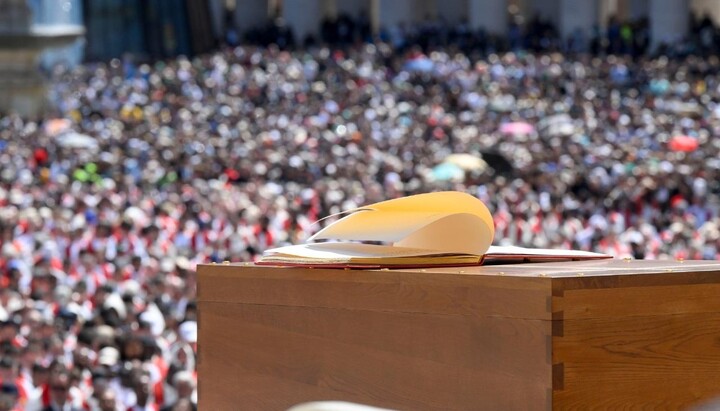Chapel to be erected in the place where Gagarin crashed

The Dean of the Kirzhach District Archpriest Dimitry Yershov conducted the consecration, among those who attended the ceremony was twice heroes of the Soviet Union cosmonauts-pilot Alexey Leonov, who actively participated in restoration of St. Andrew’s Church built in 1825, which is located nearby.
The chapel will be built near the memorial to Gagarin and his pilot instructor Vladimir Seryogin opened in 1975. A monument consists of a 16-meter wall in form of an aircraft wing made of red granite. Portraits of Gagarin and Seryogin are carved on the front side.
MIG-112 aircraft, an exact copy of the plane in which they started for their last flight, is also put up on the memorial.
After the consecration of the foundation stone of the future chapel and official commemorative events, a memorial service was held at the St. Andrew the First-Called Church, followed by a bell ringing from the bell tower in memory of the heroes.
Read also

Trump meets Zelensky before Pope Francis' funeral ceremony in the Vatican
The meeting lasted about 15 minutes and focused on achieving peace in Ukraine.

250,000 people attend funeral of Pope Francis, says Vatican
The funeral of the Roman Pontiff took place according to his own will, with some deviations from tradition.
Estonian Church thanks President for protecting Constitutional rights
The Church expressed gratitude to President Alar Karis for refusing to sign an anti-religious law.
Court stands by original decision to evict UOC from Cathedral in Volodymyr
The decision was reviewed due to technical errors found in the documents.
Vatican broadcasting live Pope Francis's funeral in 15 languages
Broadcasts are conducted in Italian, English, Spanish, French, Brazilian Portuguese, German, Polish, Vietnamese, Chinese, Arabic, and others.
Bulgarian Church to help Odessa Eparchy build a temple complex
Patriarch Daniel of Bulgaria blessed the trip of pilgrims from the UOC to Bulgaria so that they could tell the believers of his Church about the unique construction in Artsyz.
